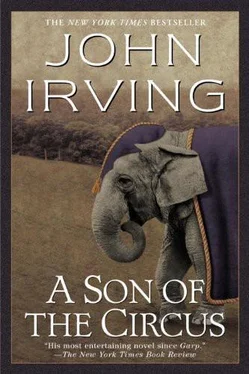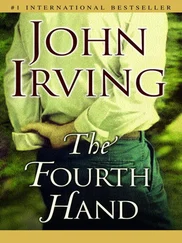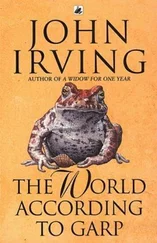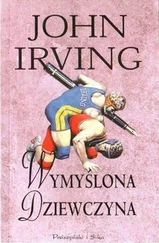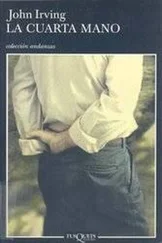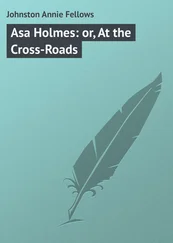John Irving - A Son of the Circus
Здесь есть возможность читать онлайн «John Irving - A Son of the Circus» весь текст электронной книги совершенно бесплатно (целиком полную версию без сокращений). В некоторых случаях можно слушать аудио, скачать через торрент в формате fb2 и присутствует краткое содержание. Город: New York, Год выпуска: 1994, ISBN: 1994, Издательство: Ballantine Book, Жанр: Современная проза, на английском языке. Описание произведения, (предисловие) а так же отзывы посетителей доступны на портале библиотеки ЛибКат.
- Название:A Son of the Circus
- Автор:
- Издательство:Ballantine Book
- Жанр:
- Год:1994
- Город:New York
- ISBN:0-679-43496-8
- Рейтинг книги:3 / 5. Голосов: 1
-
Избранное:Добавить в избранное
- Отзывы:
-
Ваша оценка:
- 60
- 1
- 2
- 3
- 4
- 5
A Son of the Circus: краткое содержание, описание и аннотация
Предлагаем к чтению аннотацию, описание, краткое содержание или предисловие (зависит от того, что написал сам автор книги «A Son of the Circus»). Если вы не нашли необходимую информацию о книге — напишите в комментариях, мы постараемся отыскать её.
, Irving’s characters transcend nationality. They are misfits—coming from everywhere, belonging nowhere. Set almost entirely in India, this is John Irving’s most ambitious novel and a major publishing event.
A Son of the Circus — читать онлайн бесплатно полную книгу (весь текст) целиком
Ниже представлен текст книги, разбитый по страницам. Система сохранения места последней прочитанной страницы, позволяет с удобством читать онлайн бесплатно книгу «A Son of the Circus», без необходимости каждый раз заново искать на чём Вы остановились. Поставьте закладку, и сможете в любой момент перейти на страницу, на которой закончили чтение.
Интервал:
Закладка:
Now the gathering clowns confessed to the doctor that Vinod had been injured in other acts, before. Once he’d fallen off a horse; once he’d been chased and bitten by a chimpanzee. Once, when the Blue Nile had a female bear, the bear had butted Vinod into a bucket of diluted shaving lather; this was a scripted part of the act, but the bear had butted Vinod too hard—he’d had his breath knocked out, and (as a consequence) the dwarf had then inhaled and swallowed the soapy water. Vinod’s fellow clowns had also seen him hurt in the Cricket-Playing Elephants act. Apparently, to the degree that Dr. Daruwalla could understand the stunt at all, one elephant was the bowler and a second elephant was the batsman; it held and swung the bat with its trunk. Vinod was the cricket ball. It hurt to be bowled by one elephant and batted by another, even though the bat was made of rubber.
As Farrokh would learn later, the Great Royal Circus never put their dwarf clowns at such risk, but this was the Great Blue Nile. The terrible teeterboard accident, which was responsible for Vinod’s pained position under the bleacher seats, was simply another elephant act of ill repute. The acts in an Indian circus are called “items”; in terms of accuracy, the Elephant on a Teeterboard item wasn’t as precise as the Cricket-Playing Elephants but it was a favorite with children, who were more familiar with a seesaw or a teeter-totter than with cricket.
In the Elephant on a Teeterboard item, Vinod acted the part of a crabby clown, a spoilsport who wouldn’t play with his fellow dwarfs on the seesaw. Whenever they balanced the teeter-totter, Vinod jumped on one end and knocked them all off. Then he sat on the teeterboard with his back to them. One by one, they crept onto the other end of the board, until Vinod was up in the air; whereupon, he turned around and slid down the board into the other dwarfs, knocking them all off again. It was thus established for the audience that Vinod was guilty of antisocial behavior. His fellow dwarfs left him sitting on one end of the seesaw, with his back to them, while they fetched an elephant.
The only part of this act that is of possible interest to grownups is the demonstration that elephants can count—at least as high as three. The dwarfs tried to coax the elephant to stamp on the raised end of the teeterboard while Vinod was sitting on the other end, but the elephant was taught to delay stamping on the teeterboard until the third time. The first two times that the elephant raised its huge foot above the teeterboard, it didn’t stamp on the board; twice, at the last second, it flapped its ears and turned away. The idea was planted with the audience that the elephant wouldn’t really do it. The third time, when the elephant stamped down on the seesaw and Vinod was propelled into the air, the crowd was properly surprised.
Vinod was supposed to be launched upward into the rolled nets that were lowered only for the trapeze performance. He would cling to the underside of this netting like a bat, screaming at his fellow dwarfs to get him down. Naturally, they couldn’t reach him without the help of the elephant, of which Vinod was demonstrably afraid. Typical circus slapstick; yet it was important that the teeterboard was aimed exactly at the rolled-up safety nets. That fateful night his life changed, Vinod realized (as he sat on the seesaw) that the teeterboard was pointed into the audience.
This could be blamed on the Kingfisher lager; such big bottles of beer had an unsteadying effect on dwarfs. Dr. Daruwalla would never again bribe dwarfs with beer. Sadly, the seesaw was pointed in the wrong direction and Vinod had neglected to count the number of times that the elephant had raised its foot, which the dwarf had previously managed to do without seeing the elephant; Vinod always counted the times the elephant raised its foot by the gasps of anticipation in the audience. Of course, Vinod could have turned his head and looked at the elephant to see where the beast’s great foot was. But Vinod held himself accountable for certain standards: if he’d turned to look at the elephant, it would have spoiled the act completely.
As it happened, Vinod was flung into the fourth row of seats. He remembered hoping that he wouldn’t land on any children, but he needn’t have worried; the audience scattered before he arrived. He struck the empty wooden bleachers and fell through the space between the planks.
Created by spontaneous mutation, an achondroplastic dwarf lives in pain; his knees ache, his elbows ache—not to mention that they won’t extend. His ankles ache and his back aches, too—not to mention the degenerative arthritis. Of course there are worse types of dwarfism: pseudoachondroplastic dwarfs suffer so-called windswept deformities—bowleg on one limb, knock-knee on the other. Dr. Daruwalla had seen dwarfs who couldn’t walk at all. Even so, given the pain that Vinod was accustomed to, the dwarf didn’t mind that his backside was numb; it was possibly the best that the dwarf had felt in years—in spite of being catapulted 40 feet by an elephant and landing on his coccyx on a wooden plank.
Thus did the injured dwarf become Dr. Daruwalla’s patient. Vinod had suffered a slight fracture in the apex of his coccyx, and he’d bruised the tendon of his external sphincter muscle, which is attached to this apex; in short, he’d quite literally busted his ass. Vinod had also torn some of the sacrosciatic ligaments, which are attached to the narrow borders of the coccyx. The numbness of his backside, which soon abated—thence Vinod would return to the world of his routine aches and pains—was possibly the result of some pressure on one or more of the sacral nerves. His recovery would be complete, although slower than Deepa’s; yet Vinod insisted he’d been permanently disabled. What he meant was he’d lost his nerve.
Future flight experiments with the clowns of the Great Blue Nile would have to be conducted without Vinod’s participation—or so the dwarf claimed. If Shiva was the God of Change, and not merely the Destroyer, perhaps the change that Lord Shiva intended for Vinod was actually a career move. But the veteran clown would always be a dwarf, and Vinod struck Farrokh as lacking the qualifications for a job outside the circus.
Vinod and his wife were recovering from their respective surgeries when the Great Blue Nile completed its term of engagement in Bombay. While both Deepa and her dwarf husband were hospitalized, Dr. Daruwalla and his wife took care of Shivaji; after all, someone had to look after the dwarf child—and the doctor still held himself accountable for the Kingfisher. It had been some years since the Daruwallas had struggled to manage a two-year-old, and they’d never before tried to manage a dwarf two-year-old, but this period of convalescence proved fruitful for Vinod.
The dwarf was a compulsive list maker, and he enjoyed showing his lists to Dr. Daruwalla. There was quite a long list of Vinod’s acquired circus skills, and a sadly shorter list of the dwarf’s other accomplishments. On the shorter list, Dr. Daruwalla saw it written that the dwarf could drive a car. Farrokh felt certain that Vinod was lying; after all, hadn’t Vinod proposed that very lie which the doctor had used to bleed the dwarfs of the Great Blue Nile?
“What sort of car can you drive, Vinod?” the doctor asked the recuperating dwarf. “How can your feet reach the pedals?”
It was to another word on the short list that Vinod proudly pointed. The word was “mechanics”; Farrokh had at first ignored it—he’d skipped straight to “car driving.” Dr. Daruwalla assumed that “mechanics” meant fixing unicycles or other toys of the circus, but Vinod had dabbled in auto mechanics and in unicycles; the dwarf had actually designed and installed hand controls for a car. Naturally, this was inspired by a dwarf item for the Great Blue Nile: ten clowns climb out of one small car. But first a dwarf had to be able to drive the car; that dwarf had been Vinod. The hand controls had been complicated, Vinod confessed. (“Lots of experiments are failing,” Vinod said philosophically.) The driving, the dwarf said, had been relatively easy.
Читать дальшеИнтервал:
Закладка:
Похожие книги на «A Son of the Circus»
Представляем Вашему вниманию похожие книги на «A Son of the Circus» списком для выбора. Мы отобрали схожую по названию и смыслу литературу в надежде предоставить читателям больше вариантов отыскать новые, интересные, ещё непрочитанные произведения.
Обсуждение, отзывы о книге «A Son of the Circus» и просто собственные мнения читателей. Оставьте ваши комментарии, напишите, что Вы думаете о произведении, его смысле или главных героях. Укажите что конкретно понравилось, а что нет, и почему Вы так считаете.
